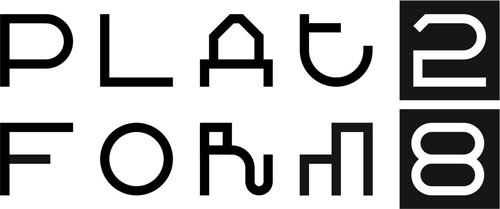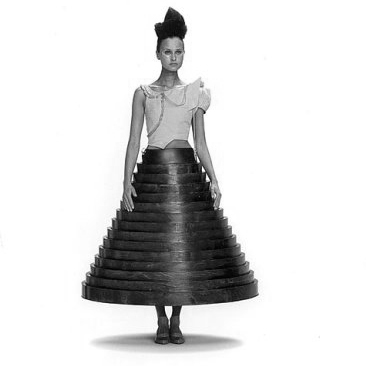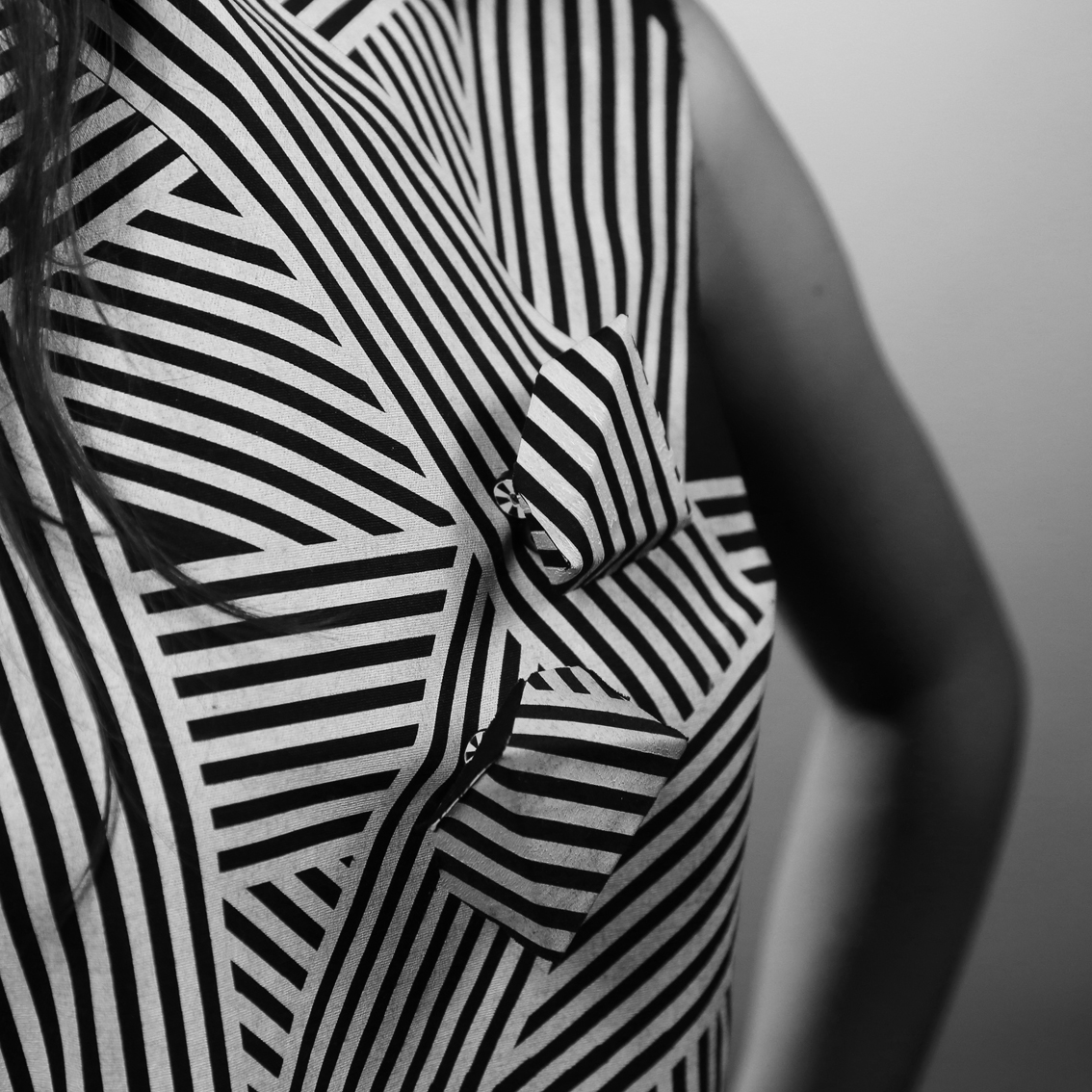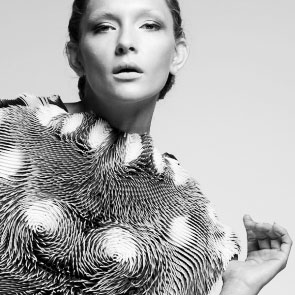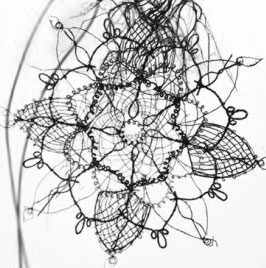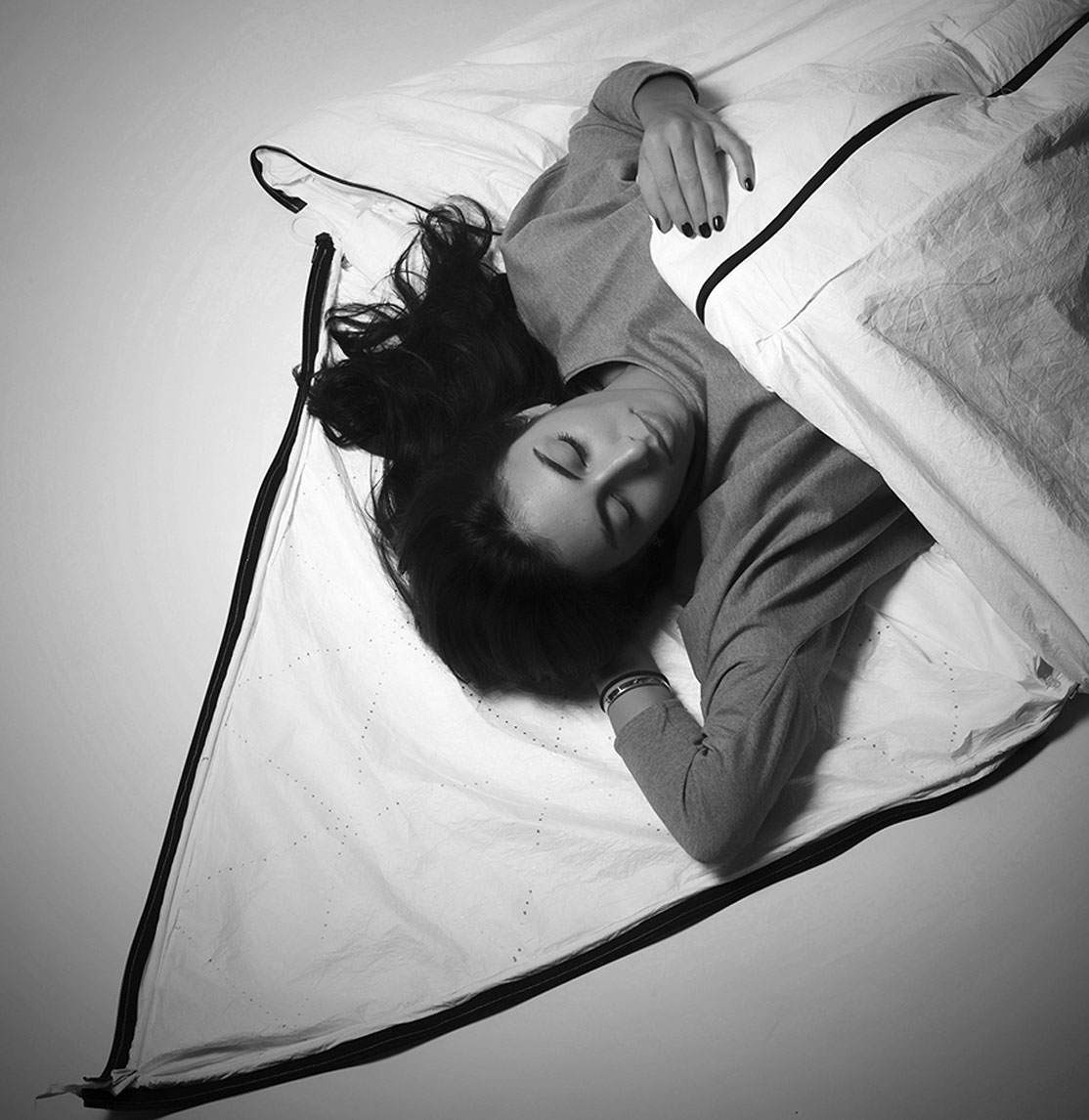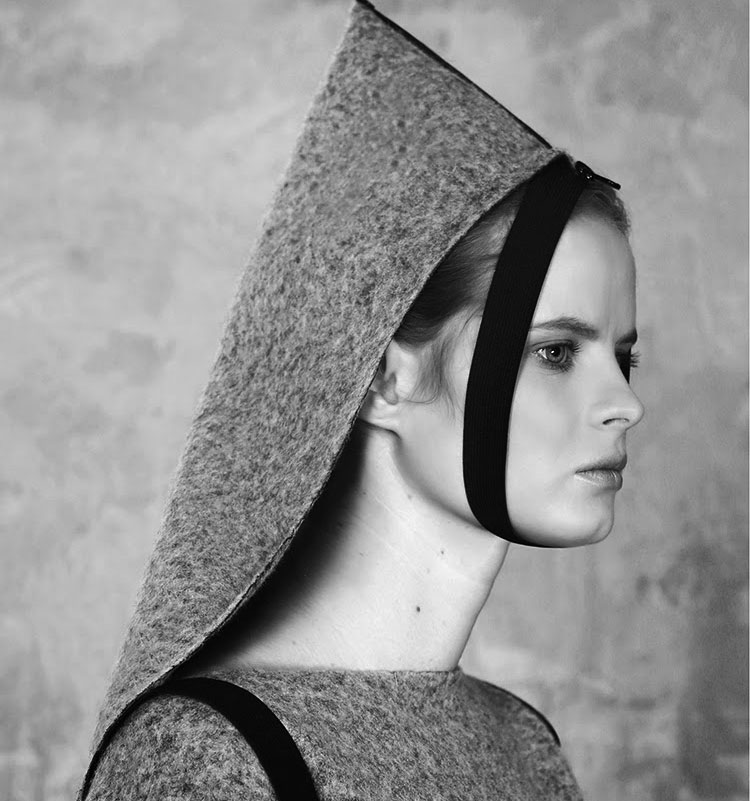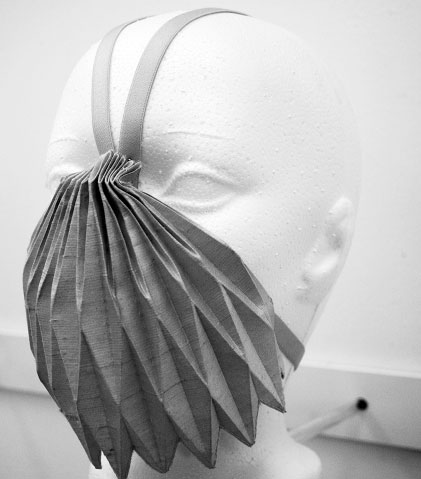Stacie Vos
Micro Environment Gear
Stacie Vos is an intern architect with the Ontario Association of Architects (OAA). She graduated from the School of Architecture, McGill University (2008) and the Faculty of Architecture, Landscape, and Design, University of Toronto (2012). Stacie designed and constructed “Micro-Environment Gear” for her Masters of Architecture thesis in conjunction with RAD, the Responsive Architecture at Daniels laboratory. Building on current research in wearable computing and self-monitoring health initiatives, Micro-Environment Gear merges the performance of medical gear with fashion’s affordance for self augmentation and personal expression.Stacie is currently employed at Cindy Rendely Architexture, a studio with a focus on materiality, craft and detailing.
As the frequency of global pandemics continues to rise and air pollution levels become a daily concern, our collective health in the twenty-firstcentury depends on the physical and virtual apparatuses used for tracking and identifying infectious diseases, particulate pollution and chemical exposure within our urban context. Micro-Environment Gear proposes clothing, an intimate architecture, as a site capable of mitigating our intake of airborne pathogens and particulates while providing customized psychological comfort and personal expression in dense environments. Informed by the changing conditions of our body’s immune system and the air quality levels surrounding us, this respiratory apparel mutates its form to give protection when required. The gear provides a new perception of the air we are constantly immersed in, alerting the wearer to unhealthy conditions which would otherwise be invisible to the human eye.
Micro-Environment Gear offers a series of shirts and personalized face masks. The shirts are equipped with temperature and galvanic response biosensors placed at the user’s underarm and hand sweat glands in order to track the performance of the user’s immune system. The collected biosensor data is interpreted by a LilyPad Arduino micro-controller which is powered by a rechargeable battery. The micro-controller also accesses wireless environmental data, including levels of air pollutants, for the user’s immediate location. Upon detecting a precarious state of the body and/or the environment surrounding the user, the shirt’s collar – sewn with shape memory wire – is released to cover the wearer’s face.
The design of the face mask takes current advanced medical mask technology — such as microbe-killing silver nano-particle impregnated filter textiles for germ deactivation — and adds performance through form. Origami tessellations are used to multiply the mask’s filtration media surface area in order to provide an increased level of protection. The tessellations also allow the face mask to efficiently change its shape into a compact, storable form. Each face mask is composed of two layers, a non-woven polypropylene filtration material, and an alluring exterior layer of silk, nylon or polyester which provides customization and reinforces the origami’s structure.
The Micro-Environment Gear incorporates all wearable, electronic components within a textile substrate, interconnected with conductive fabric designed as an embroidered pattern. While gear prototypes on display are not electronically actuated, they show place-markers where sensors and actuators are to be housed in the garment. A soft circuit concept model was completed with a functioning Lilypad Arduino micro-controller, temperature sensor and galvanic response sensor which actuated a fabric petal sewn with shape memory wire.
Micro Environment Gear
Stacie Vos is an intern architect with the Ontario Association of Architects (OAA). She graduated from the School of Architecture, McGill University (2008) and the Faculty of Architecture, Landscape, and Design, University of Toronto (2012). Stacie designed and constructed “Micro-Environment Gear” for her Masters of Architecture thesis in conjunction with RAD, the Responsive Architecture at Daniels laboratory. Building on current research in wearable computing and self-monitoring health initiatives, Micro-Environment Gear merges the performance of medical gear with fashion’s affordance for self augmentation and personal expression.Stacie is currently employed at Cindy Rendely Architexture, a studio with a focus on materiality, craft and detailing.
As the frequency of global pandemics continues to rise and air pollution levels become a daily concern, our collective health in the twenty-firstcentury depends on the physical and virtual apparatuses used for tracking and identifying infectious diseases, particulate pollution and chemical exposure within our urban context. Micro-Environment Gear proposes clothing, an intimate architecture, as a site capable of mitigating our intake of airborne pathogens and particulates while providing customized psychological comfort and personal expression in dense environments. Informed by the changing conditions of our body’s immune system and the air quality levels surrounding us, this respiratory apparel mutates its form to give protection when required. The gear provides a new perception of the air we are constantly immersed in, alerting the wearer to unhealthy conditions which would otherwise be invisible to the human eye.
Micro-Environment Gear offers a series of shirts and personalized face masks. The shirts are equipped with temperature and galvanic response biosensors placed at the user’s underarm and hand sweat glands in order to track the performance of the user’s immune system. The collected biosensor data is interpreted by a LilyPad Arduino micro-controller which is powered by a rechargeable battery. The micro-controller also accesses wireless environmental data, including levels of air pollutants, for the user’s immediate location. Upon detecting a precarious state of the body and/or the environment surrounding the user, the shirt’s collar – sewn with shape memory wire – is released to cover the wearer’s face.
The design of the face mask takes current advanced medical mask technology — such as microbe-killing silver nano-particle impregnated filter textiles for germ deactivation — and adds performance through form. Origami tessellations are used to multiply the mask’s filtration media surface area in order to provide an increased level of protection. The tessellations also allow the face mask to efficiently change its shape into a compact, storable form. Each face mask is composed of two layers, a non-woven polypropylene filtration material, and an alluring exterior layer of silk, nylon or polyester which provides customization and reinforces the origami’s structure.
The Micro-Environment Gear incorporates all wearable, electronic components within a textile substrate, interconnected with conductive fabric designed as an embroidered pattern. While gear prototypes on display are not electronically actuated, they show place-markers where sensors and actuators are to be housed in the garment. A soft circuit concept model was completed with a functioning Lilypad Arduino micro-controller, temperature sensor and galvanic response sensor which actuated a fabric petal sewn with shape memory wire.
